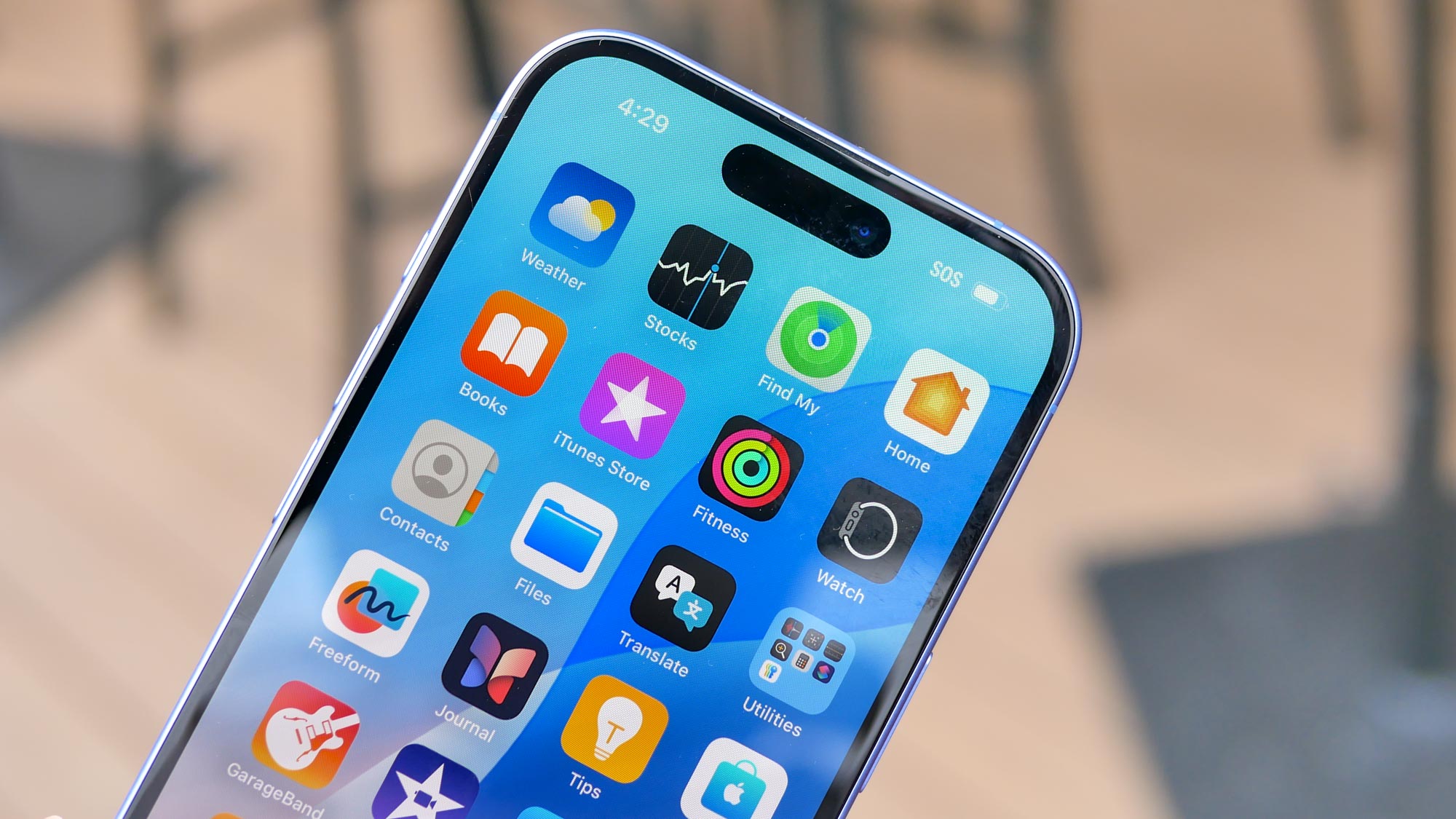The Hottest TV Technologies
It will be an amazing year, with OLED, curved and bending screens, nanocrystal color, 4K/Ultra HD sets, smarter TVs, and even glasses-free 3D.
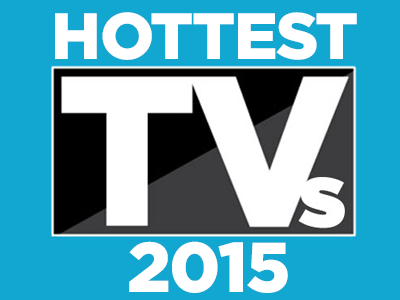
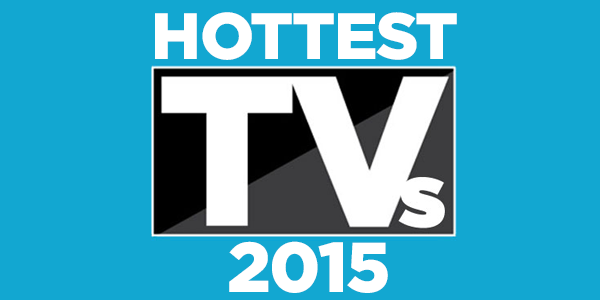
Every year, when consumers think there is nothing more that TV makers can come up with, they surprise with new products to entice viewers into making an upgrade. In past years, a single theme often dominated the New Year releases, such as 1080p, 4K, 3D or OLED. This year, innovations span a wide range, from color to resolution to smart features to games and slick design — and from the affordable to the purely aspirational.
OLED models will proliferate, though the new sets all come from one vendor, LG. Meanwhile, LED-LCD TVs from LG, Samsung, Sony and TCL use new blue LED backlights and color-tuning nanocrystals to provide a wider range of hues. Ultra HD (aka 4K) TVs will be everywhere and start to drop in price. Meanwhile, Sharp is 8K (16-megapixel) TVs. Sharp and Sony will turn the smart TV reins over to Google by introducing models running Android TV, and Roku's smart interface will make it onto more screens. Long after you thought 3D was dead, Stream TV and its partners Izon and Cello Electronics have introduced sets that really do work without dorky glasses.
LG's EG9900 77-Inch Bending OLED TV
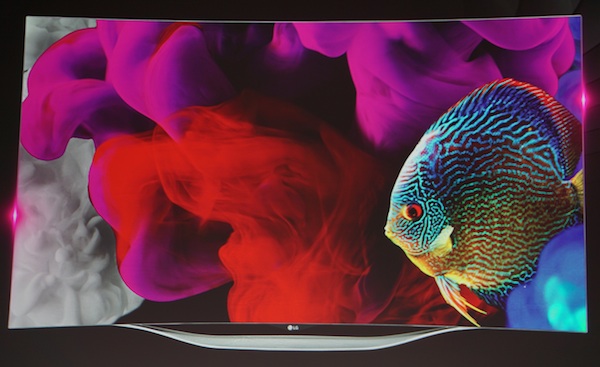
Last year, it was a proof of concept; this year, it's a product. Given that some people like flat TVs and others like curved displays, and knowing that OLED screens can be flexible, LG took the logical — though far from trivial — step of building a motorized ultra HD screen that can switch from flat to curved, or vice versa, in a few seconds. Beyond the contortionist trick, the 77-inch EG9900 packs nearly every other feature LG has, including the company's latest webOS+ smart-TV operating system, which should run lickety-split on the set's deca-core processor. (That's right, a 10-core processor.)
MORE: LG Defends OLED TVs' Future
This TV also features LG's motion-sensing Magic Remote and new speakers by Harman/Kardon that could finally deliver respectable sound from a skinny screen. LG promises the EG9900 by the second half of 2015. While the company hasn't specified a price yet, the cost will likely be up in the range of 1-percenters.
LG's EG9600 Curved OLED TVs (55- and 65-inches)

Coming a bit closer to Earth are LG's midrange OLED TVs. They don't change shape, but remain in a gentle curve. LG claims that OLEDs are better for curved screens, since these TVs don't, like the comparatively thicker LCDs, cause some light from one color of subpixel to cross into another color subpixel when the screen is bent. Aside from being smaller and inflexible, the EG6500 TVs offer most of what the EG9900 does, including LG's webOS smart-TV operating system, LG's Magic Remote and new Harman/Kardon speakers. While not a deca-core, the four-core processor should be plenty fast enough for smart-TV surfing. LG hasn't said when the TVs will go on sale, or for how much.
MORE: LG's UF9550 Nanocrystal TVs Nearly Rival OLEDs
Philips Smart Laser Backlight Ultra HD TV
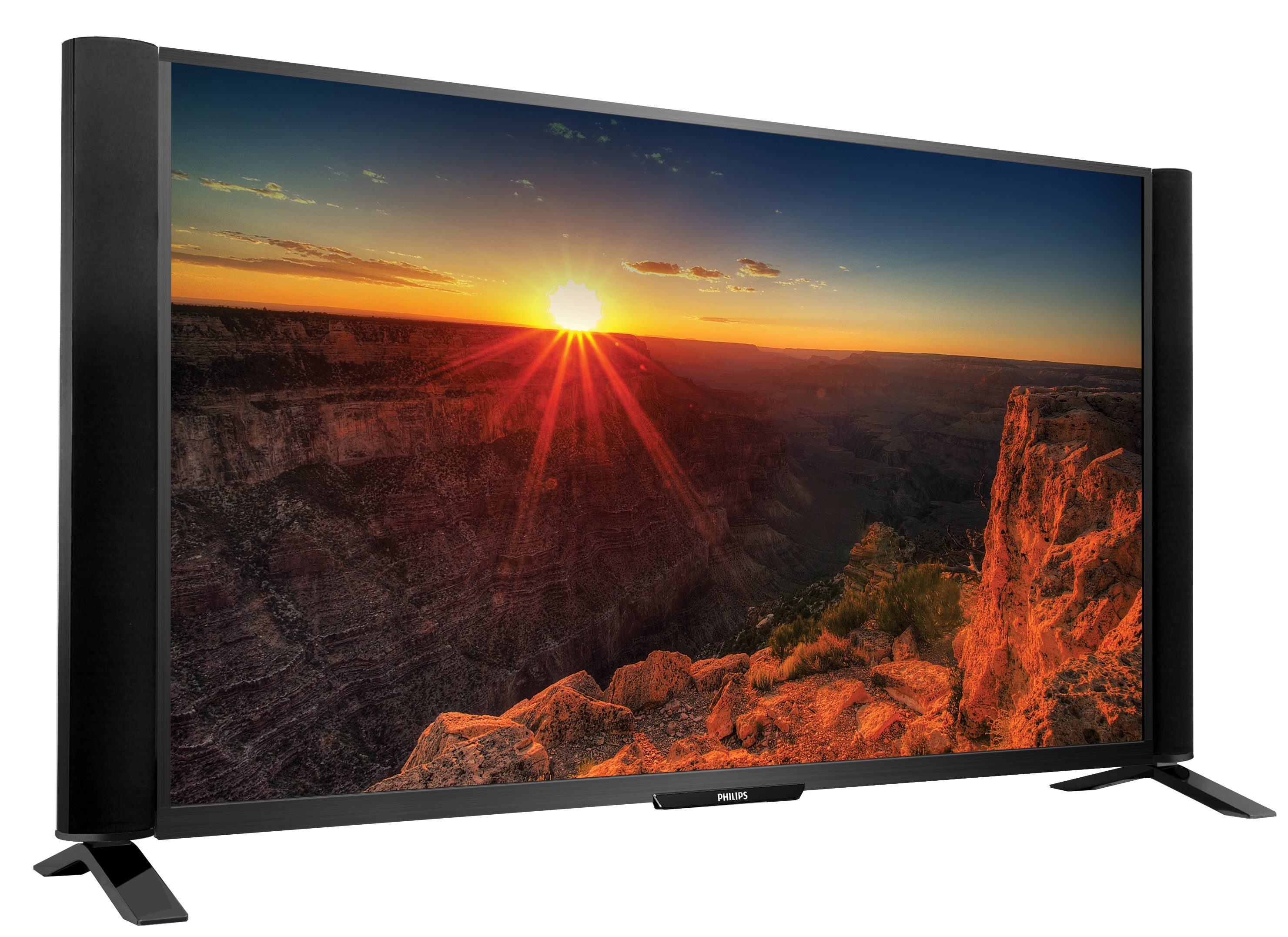
Ultra-high-definition TVs are a dime-a-dozen at this point, but many of them share the same fundamentals: an LCD screen with an extremely thin profile that sacrifices speakers for portability. The Philips Smart Laser Backlight Ultra HD TV is essentially a compact projection TV that makes use of red laser light rather than the white LED light of most TVs. Philips has also bulked up the system with a set of high-quality, detachable speakers. With accurate colors, full 4K resolution and a bevy of built-in smart features, the Smart Laser Backlight UHDTV is one of the more unusual TVs on the market, but potentially one of the more exciting, too.
Samsung JS9500 HD/4K LED TVs (65- and 88-inches)
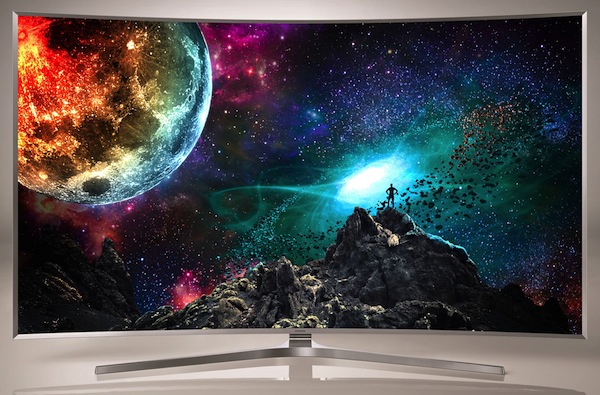
Samsung won't be challenging LG in the OLED arena, but the company is making a big showing in LED-LCD ultra-HD sets, with curved screens going up to 88 inches. The 9500 line is based on Samsung's new nanocrystal screens. These use super-efficient blue LED backlights to light the blue subpixels and nanocrystals to filter the rest of the light down to precise shades of red or green for the remaining subpixels. This allows Samsung's TVs to produce all the hues in the DCI color space used for digital cinema, and also match the smaller Rec 709 color space for today's UHD TVs. (LG, Sony and TCL also use nanocrystals, as does Samsung on its lower-priced JS9000 and JS9500 TVs.)
MORE: Samsung Touts Prismatic SUHD 4K TVs
To boost contrast, the JS95000 uses a special screen layer to absorb reflected light as well as a full array of LED backlights to brighten or dim select parts of the screen. Local dimming isn't new, but Samsung is one of the first companies (after Sony) that can temporarily double or triple the amount of electricity going to specific LEDs in order to render brilliant highlights.
Samsung will also be adding a smart TV app for PlayStation Now, Sony's streaming service that allows people to play cloud-based games right from their TV — no console required. Pricing may be similar to the current HU9000 series, which runs $4000 for a 65-inch screen.
Samsung 105-inch Bending LCD

For anyone who's smashed a smartphone screen, the idea of a bending LCD might elicit cringing. But Samsung has found a way to make a 105-inch LED LCD that can bend at the press of a button. You can even pick a specific curvature that you like (though SAmung hasn't said how much of a curve it can achieve). The TV will be available this spring. Samsung hasn't named a price, but here's a perspective. It's currnt, non-bending 105-inch LCD sells for $120,000 - about as much as a well-stocked Porsche. The TV isn't just big: it's also wide, with the 21:9 aspect ratio of Cinemascope movies. That also involves extra pixels: for a "5K" resolution of 5120 x 2160.
Sharp 8K, 85-inch Prototype LCD TV
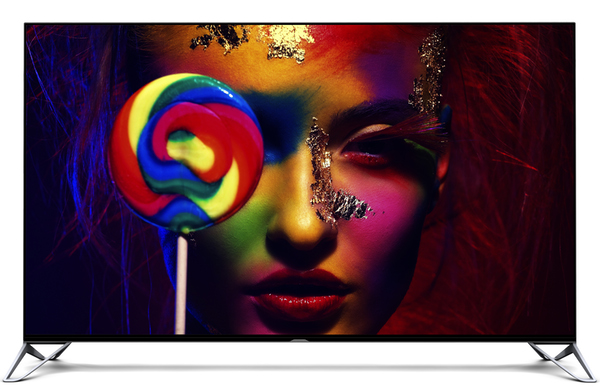
Why bother with 4K when you can go right to 8K, with a resolution of 7680 x 4320? A recent study by Japanese researchers indicates that an 8K screen looks as detailed as real life and might be the nirvana of TV technology — uncanny valley be damned. Sharp's is not the first 8K prototype. (I've seen them from other companies, and the experience is a mix of cool and creepy.) But Sharp says it's the first to comply with the BT.2020 broadcast standards that the Japanese (who live in the future) have already set up and will be testing as soon as 2016. Among the requirements are 120 fps and 12-bit color depth — for way smoother motion and finer color detail than todays 4K/UHD TVs can muster. Sharp's massive-resolution screen will have an appropriately massive 85-inch diagonal — and no immediate news for a version you (well, someone) could buy.
Sharp's Kinda-8K TV (80-inch)
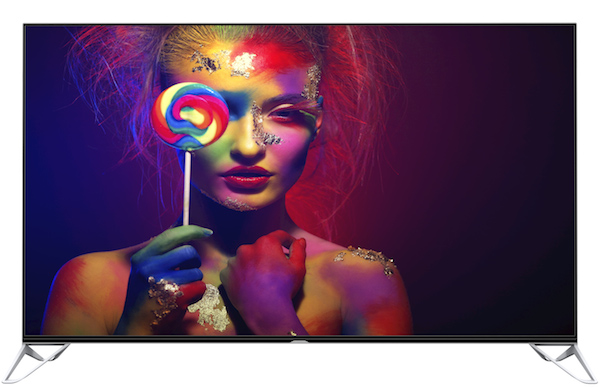
Branded "Beyond 4K," Sharp's sets are essentially 4K/UHD TVs with about 8 million pixels. However, these TVs can tweak how their pixels interact to simulate, in some instances, a resolution approaching 8K, or about 33 million pixels. Here's how they do it: Each subpixel in the TV, such as red or green, has top and bottom halves; Sharp splits the subpixel to double the number of horizontal lines from 2,160 to 4,320.
MORE: Sharp's 4K LCDs Boast Cinematic Color, Do-All
The vertical lines are trickier. Along with the red, green and blue subpixels, Sharp's TVs also have yellow. Sharp's Quattron+ tech fiddles with the brightness of all the subpixels so that the green and yellow ones, which are easiest to see, can share color from the red and blue subpixels between them — making one pixel look a bit like two. Green and yellow parts of images best take advantage of pixel splitting; in blue and red portions, it makes less or even no difference. Sharp used this trick last year to make an HDTV act like a 4K set. (See article with fuller tech explanation below.) But real 4K TV prices dropped so quickly that doing so didn't make sense. Real 8K is still far out (although Sharp has a prototype), so there may be a role for Sharp's TVs if they make HD and 4K look better, and if they are affordable. We'll see around fall 2015.
For a more detailed description of the pixel-splitting, see our coverage of Sharp's 2K to 4K TVs from last year.
Sony X910C 0.2-Inch Thick 4K TV (75 inches)
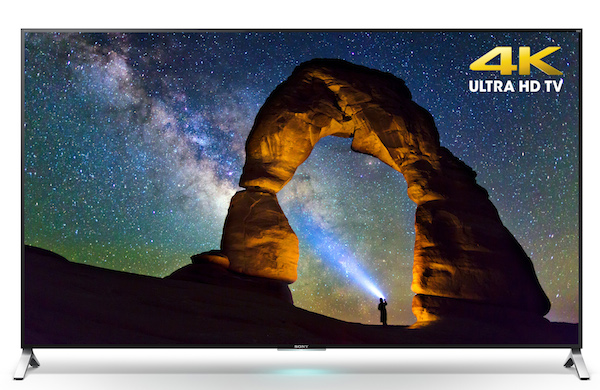
Sony never went big on OLED TVs, but it's trying to match them with its new LED-LCD models. The XBR X910C has a 4K screen that measures 75 inches on the diagonal but just 4.9 mm (about 0.2 inches) thick at its skinniest part. To challenge OLED on color, the X910C uses the latest generation of Sony's quantum dot/nanocrystal light-filtering technology, which the company calls Triluminos. Sony promises that its brand-new image processor, the X1, will display all those colors more accurately. The TV supports ultra-HD streaming from sites such as Netflix and Amazon. It's also one of the first TVs to run Google's Android TV operating system for smart TVs (see our hands on). If you don't have a mansion with enough space for a 75-inch set, you can try the 55- and 65-inch screens in the similar X900C TV lineup, also new this year. The TVs will be out in the spring. We don't yet know what they will cost, but don't expect cheap.
Stream TV Glasses-Free 3D Sets from Izon and Cello Electronics
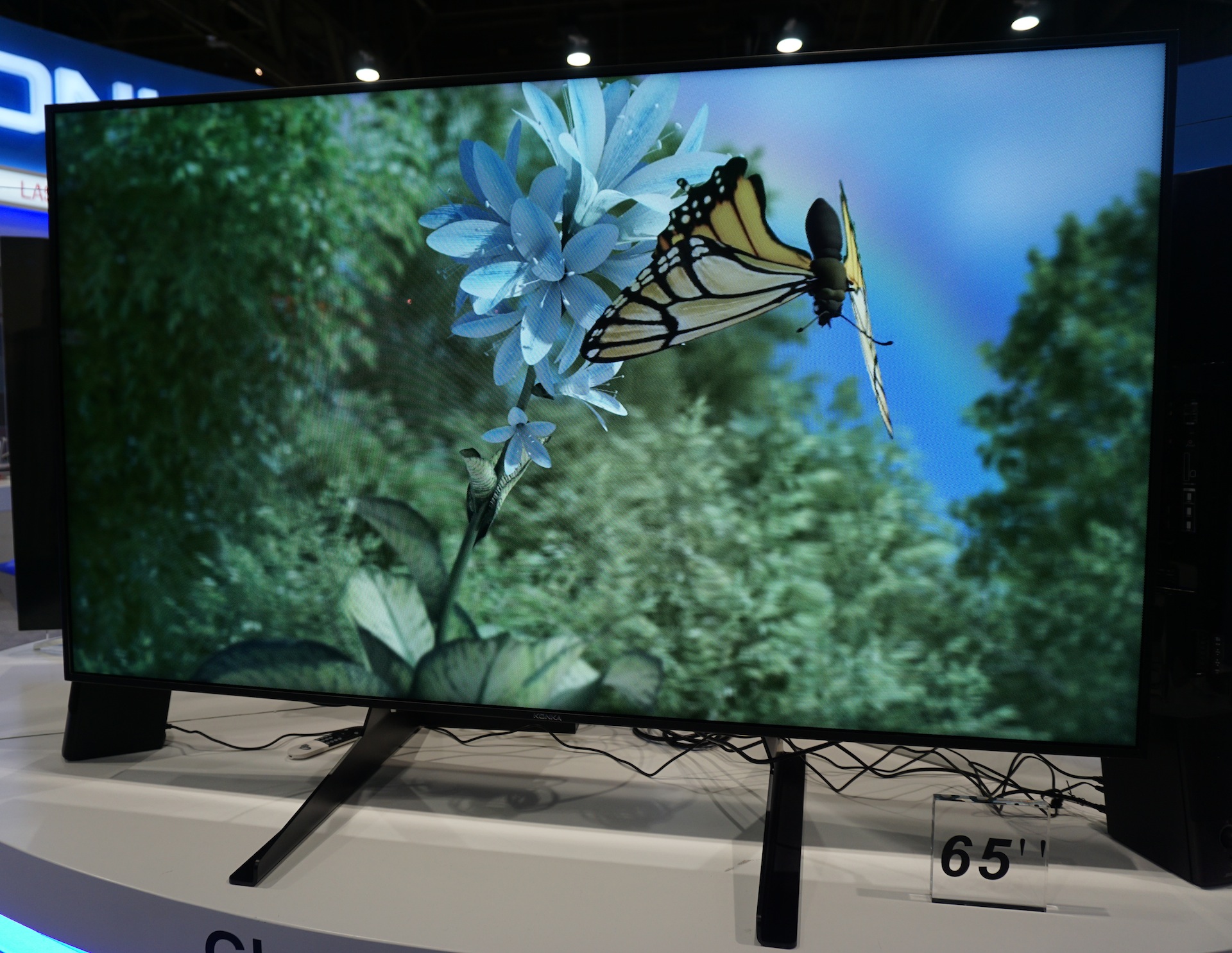
TV viewers may have had it with 3D by now. But Stream TV is hoping that they will reconsider when they try its technology. Stream TV eschews the old technique of using glasses to show the right and left eye slightly different images. Instead, Stream's technology approximates how light rays would reflect off an object in the real world. Using a technology that resembles Sharp's resolution-doubling Quattron+ TVs, Stream TV has figured out how to use the subpixels in a 4K screen to create new effects. The company's optical filter fits over a standard 4K LCD screen and redirects light from the individual subpixels across the screen so that they converge in virtual pixels about a meter (3 feet) in front of the TV.
MORE: Published: Glasses-Free 3D Video Finally Works with Stream TV's Tech
The images seem to float in front of the screen, like holograms. When you don't want the 3D effect, you can switch the set back to flat 4K resolution. Last year, Stream TV showed prototypes at CES. This year, it announced licensing deals with TV makers Izon in the United States, Cello Electronics in the United Kingdom and Hisense, Konka and Skyworth in China to use Stream screen and video processing technology later this year in TVs up to 65 inches.
TCL 110-inch Curved LCD 4K TV
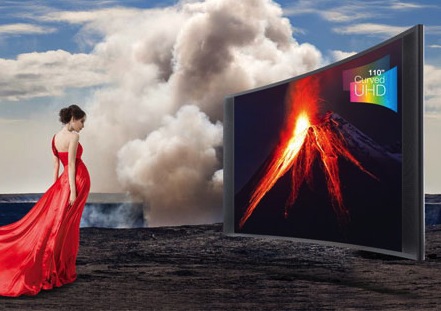
That's a lot of letters and numbers, and a lot of screen. In fact, Chinese TV maker (the purported third-largest in the world) says that its behemoth sets the Guiness World record. Although it doesn't quite make Samsung's and LG's loveseat-size 105-inch TVs from last year look puny. Based on sparse info we've gotten, it seems that the set uses an array of LED backlights and the local-dimming effect that's now en vogue as a way to boost contrast. The company also boasts of an undefined "infinite black" technology that eliminates reflections off the screen. TCL is claiming a staggering brightness 800 nits: for perspective, that's likely bright enough to watch outside on a sunny day. Good thing it has the antireflective tech. (Though after you adjust it to get images that actually look nice, it will probably be at more reasonable brightness.) TCL hasn't name a price or on-sale date yet; but don't expect it to be an impulse buy.
TCL Roku 4K TV
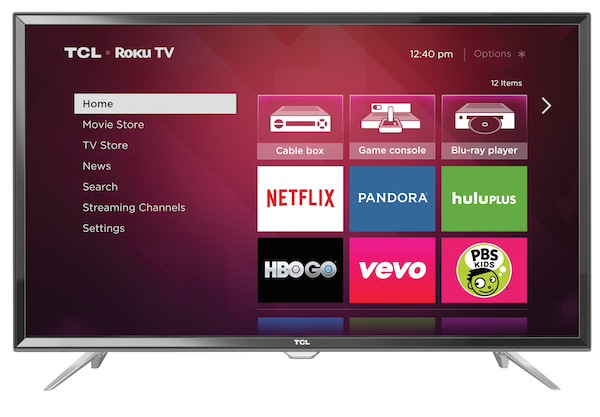
Scarcely known outside China until recently, TCL is now a global headline maker. It was one of the first two companies (along with fellow Chinese firm Hisense) to launch HDTVs branded (and partly designed) by set-top box maker Roku in 2014. Now it's the first company to sign on for a 4K model. Roku TVs are among our favorite smart TVs for their intuitive interface (the same applies to Roku's set-top boxes); and it's exciting to see the budget brands go a bit upscale. So far TCL and Roku haven't said anything else about the TV — not even the size or sizes that will be offered. So far it's just a curcuit board, Roku told me. We look forward to learning more.
- New Roku Smart TVs Coming: Haier, Insignia and TCL 4K
- Best TVs You Can Buy Now
- Best Streaming Players: Chromecast, Roku, Apple TV & More
Follow senior editor Sean Captain @seancaptain. Marshall Honorof contributed to this piece. Follow him at mhonorof@tomsguide.com and @marshallhonorof. Follow us @tomsguide, on Facebook and on Google+.
Sign up to get the BEST of Tom's Guide direct to your inbox.
Get instant access to breaking news, the hottest reviews, great deals and helpful tips.
Sean Captain is a freelance technology and science writer, editor and photographer. At Tom's Guide, he has reviewed cameras, including most of Sony's Alpha A6000-series mirrorless cameras, as well as other photography-related content. He has also written for Fast Company, The New York Times, The Wall Street Journal, and Wired.
-
Markus676 The future TV technology is panel - free display. I am really impressed with HISENSE 100-inch laser cinema HD TV. The company is currently working on ptical engine with a 0.24 throw ratio -- that's a 100-inch Full HD image from just 1.7 inches.Reply
I think that the introduction and mass production of Laser TV projectors will signal the death of LCD and plasma panel TVs. The most important advantage of Laser TV projector is significantly lower energy consumption than equivalent size LCD or plasma TV but also the lower price, incredibly bright , intense colours and longer life. Sony has released a 4K Laser TV projector however the $40,000 price is ridiculous.Samsung, LG and Mitsubishi are focusing too much on OLED, USHD and curved TV instead embracing the world of panel-free laser displays ASAP.
I wonder whether LG Hecto Laser TV have been discontinued due to fear that customers will abandon the LCD and plasma TV in favour of the new technology.
http://www.cnet.com/au/news/hisense-goes-big-at-ces-2015-with-100-inch-laser-cinema-tv/
